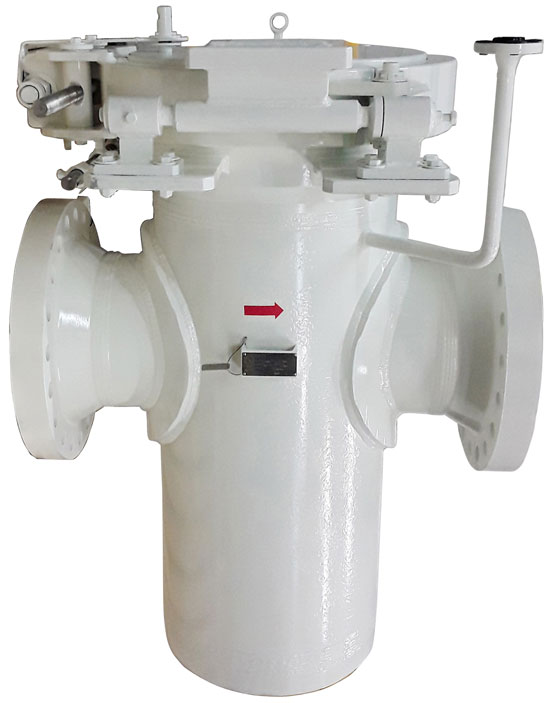The path that a custom fabricated pressure vessel takes as it works its way from concept to shipping at Sure Flow Equipment is a marvelous, intricate journey, with lots of steps along the way.
While many of our customers have been working with our team for more than a quarter of century, we felt it appropriate to give new customers an overview of the steps involved at Sure Flow. Information and communication are always key in a customer relationship and we feel that the more familiar our customers are with how we work, the better.
In this blog we’ll discuss our process, and we’ll supplement with some photos of an actual order as it works its way through our system of custom fabricated ASME pressure vessels.
Engineering
The first stop along the way is in our Engineering Department. They carefully review the client’s specifications, application and the design requirement. They will work with this information to develop a fully functional pressure vessel.
This design will be supported by standard computerized ASME calculations and finite element analysis if required. With our team’s years of direct industrial experience with designing pressure vessels, we have been immersed in codes, standards and regulations. We use this experience and body of knowledge to ensure our client’s specifications meet and exceed these many and varied codes.
Purchasing
Sure Flow produces a huge variety of products that are used in diverse industries, with a broad spectrum of fluids being strained, filtered and controlled. We source the specific materials and components required from around the world, all focused on the best fit with our customer’s requirements. We have spent decades building relationships with suppliers we trust to provide the specialized and often costly materials for these projects.
We have developed the same sort of long-term relationships with our suppliers that our customers have with us. Trust is always key and it’s why we consider so many of our customers as “long-term”.
Fitters / Welders
One of the key team members in the fabrication of pressure vessels is the fitter/welder.
Our welding and fitting team has decades of experience working with a variety of different pressure vessels, welding processes and materials, and shop and field work. This key position entails interpretation of drawings, weld procedures, completing layouts/fit-ups, and finally welding.
All our tradespersons have formal training in metal fabrication and have AMSE/TSSA Welder Certificates for any type of welding they are completing.
Hydrotesting and Assembly
The next step in the fabrication process for any pressure vessel, prior to coating, is the hydrostatic test. This is performed in accordance with all the applicable code requirements.
The purpose of the test is to ensure safety, reliability and the leak tightness of the pressure vessel. It is critical that the test is performed safely and effectively. First, the vessel is cleaned internally and externally. Next the strainer basket is placed in the unit which is then sealed with a blind flange to a specified torque.
The vessel is filled with water and pumped up to pressure. It is then left at that pressure for a specified length of time based on the operation parameters.
During this period the pressure in the unit is monitored with calibrated pressure gauges.
Hydrostatic test pressure is design pressure multiplied by a factor. The factor is determined by the Design Code and/or the customer specification. The length of the test is also determined by the Design Code and customer specifications.
Specialized Coatings
Many of the pressure vessels that Sure Flow Equipment fabricates are placed in severe corrosive and temperature environments, which necessitates the application of specialized coatings.
Our industrial coating suppliers specialize in pressure vessels and piping coating systems. They have a thorough understanding of coating types, modes of protection, curing mechanisms and methods of application.
They also have substantial experience in surface preparation and in particular preparation equipment, as well as methods and standards for abrasive blasting and various cleaning techniques.
Shipping
The final step in the process is preparation for shipping. We prepare each unit with the most appropriate type of shipping container, often based on palleting and strapping depending on the unit’s size. We also custom fabricate some specific types of crating, particularly when the equipment is being shipped overseas.
All-in-all it’s quite an amazing process, from concept to completion.
We have a well-trained team with a variety of skills to each work their magic and ensure the final fabricated pressure vessel meets and exceeds both quality standards and customer expectations.
It’s always a gratifying day when one of these marvelous units is loaded on a truck for delivery to a customer. Fabricating units of this size and complexity is a formidable challenge and one Sure Flow Equipment been up to for more than a quarter of a century.
In keeping with “a picture is worth a thousand words” theme, below is a complete 16-inch BWH600 fabricated basket strainer. In our next blog we’re going to walk this unit through the entire production process we’ve just documented above. It should help give some context and answer any questions our description might have raised.


